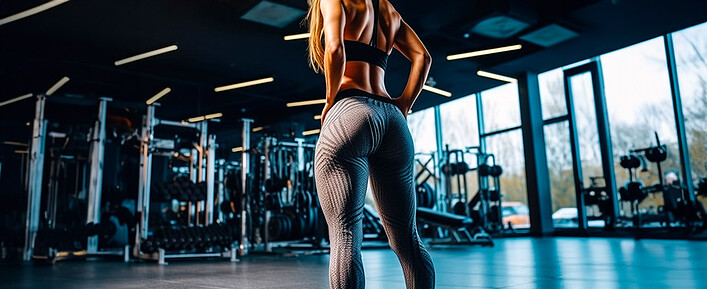by Gareth Sapstead
Level-Up Your Single-Leg RDL
The single-leg RDL is a good, but not great, muscle builder. This version takes balance out of the equation and hammers the glutes much harder.
The traditional single-leg Romanian deadlift is a top-tier exercise for improving single-leg strength, stability, and balance. But if you’re trying to build muscle with it, there’s a good chance you’re wasting your time. For people wanting glute and hamstring growth, there’s something better: the bench-supported, single-leg Romanian deadlift.
Stability and Balance: Good and Bad
Most people don’t have the balance and stability to truly maximize the single-leg RDL. That’s not a knock on your abilities. The exercise simply challenges your balance and proprioceptive abilities. This is a good thing since it activates more hip stabilizers than its two-leg equivalent, plus it creates more neuromuscular adaptations based on its demands. That’s why athletes love it.
But for building muscle, challenging your balance and firing up your stabilizing muscles actually gets in the way. If you increase stability then you’re going to increase force output from the targeted muscles. If you increase the stability while doing the single-leg RDL, your hamstrings and glutes grow faster.
One option is to hold onto something with a free hand. The other option is to use a bench to support your lower body.
Take a Knee for Gains
If you watch yourself in the mirror while performing the single-leg RDL, what do you notice about your hips? They’re probably not level. Maintaining good hip alignment as you hinge allows you to stimulate your hamstrings and glutes for growth. Using a bench to support your knee during the single-leg RDL keeps your hips level and improves stability. It might even be a better option than the B-stance RDL.
Here’s How to Do It
- Begin with your dumbbell ready on the bench. This makes it easier to start the exercise once you’re in the correct position.
- Place your non-working knee on the bench. You may feel better with your entire shin on the bench or just having the knee down and the foot floating. Go with what feels best.
- Your resting knee should be slightly behind the knee of your working leg.
- Keep your other foot flat on the floor with the knee of your working leg a little soft.
- Grab your dumbbell and center it over your working leg.
- To focus more on the glutes, your knee may bend more to allow you to really push your hips back as you lower the dumbbell down.
- To focus more on the hamstrings, just think about it as a hinge over and limit the knee bend.
- Keep the dumbbell close to your thigh. Use your grip on the dumbbell to trace all the way down your leg.
- Get as deep as you can, then return all the way to the top.
- Tension should be focused on glutes and hamstrings throughout.
- You can go surprisingly heavy with these, so try progressing with it! Using Versa Gripps (Buy at Amazon) helps.
Height Modifications
Your hips should be level when you place your knee on the bench. If your bench is too low because you’re on the taller side, use a foam pad on the bench to level-up your resting knee. If your bench is too high because you’re on the shorter side, place something on the floor to elevate your working leg. A weight plate or two can work, as shown in the second part of the video.
Programming It
Use these as more of a secondary exercise in your lower-body workouts. If you have a weaker leg, start your sets with that side. Work up in weight to 2-3 challenging sets on each leg, anywhere from 8-15 reps.
T Nation earns from qualifying purchases as an Amazon Associate. Read more about our policy.

